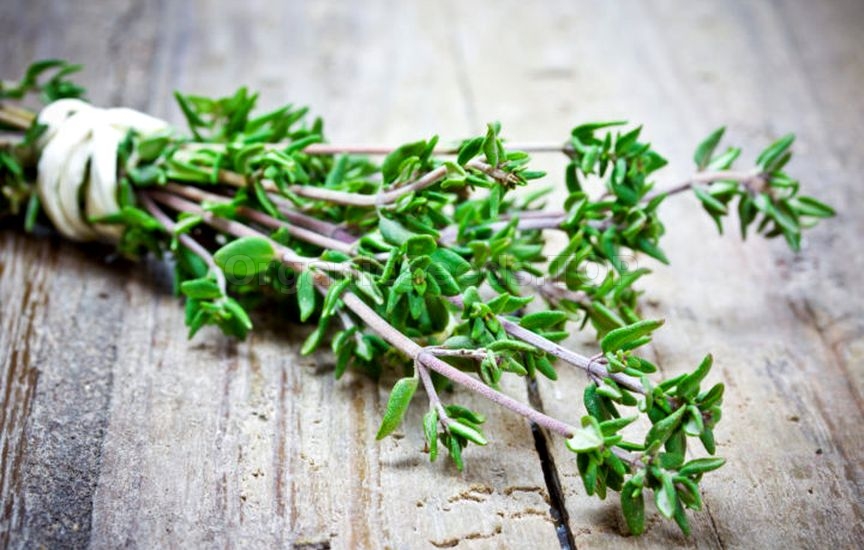

Thyme will enjoy an area that receives full sunlight for the majority of the day, with temperatures of at least 70F or more. Direct sow on a calm day, or transplant outdoors when all danger of frost has passed. This is crucial for germination to occur. Scatter a pinch of tiny seeds to the surface of the soil, allowing direct sunlight to reach the seeds. Start in peat pots, 6 to 8 weeks prior to the last frost. Thyme seeds are extremely tiny, but are easy to establish when sown indoors. Because thyme is a vigerous grower, it's small seeds can oftentimes fall to the bare ground beneath to establish a collection of new plants the following year as well.

The plants will later wilt on the surface due to harsh frosts, later returning back to life the following growing season. Grown as a perennial herb, the Thyme plant will grow the first year, establishing a deep root system. Thyme's pretty pink flowers will attract an array of beneficial insects to the garden, such as butterflies, bumblebees and hummingbirds as well. The leaves are harvested to add flavor to all sorts of culinary dishes, including fish, chowders, sauces, stuffings, soups, meats and poultry.

Thyme is a popular herb that produces 16 inch plants with small pink flowers. After that, the germination rate may start to go down.Grow a garden filled with Thyme, from freshly harvested Thymus vulgaris herb seeds. Thyme seeds will remain viable for 3 years if stored in a cool, dark place, ideally between 4 and 10⁰C. Thyme was first grown around 3000 BC in Persia. Thyme can be easily dried and enjoyed throughout the year in all of your favorite recipes! QUICK FACTS Take plants in for the winter months, or mulch heavily to protect them from the harsh elements. The flavour of the leaves are best right before flowers open. Prune plants heavily once in the spring and again after flowering to prevent thyme from becoming woody. It will also grow well among nightshades like eggplant, potatoes and tomatoes as well as other herbs like chives and rosemary. For health and growth benefits, plant thyme with any member of the brassica family, such as cabbage, broccoli or kale. The aroma of thyme repels many pests and also masks the fragrance of plants that draw in pests. Fully grown plants should be allowed to dry out between waterings. After the last frost has passed, transplant seedlings 30 cm apart. Patience and faith is required, germination may take up to 30 days.Ī site with loose, well-drained soil and full sun will produce the healthiest and most fragrant plants. Thyme seeds can also be sown directly into the garden as early as the soil can be worked. Plant seeds 5 mm deep under fluorescent lights and maintain moisture and a soil temperature of 21 degrees. Start thyme seeds indoors 4 weeks before the last frost. Use thyme fresh or dried to flavour meat, fish and vegetable dishes.Ī prominent herb that can be found in many kitchen gardens and stocked in every cook's spice rack lends its subtle flavour to endless recipes. Thyme is an easy to grow herb that is adaptable to most soils and climate conditions, and can be used for edging in the garden as well as for container growing. Thyme is a shrub-like perennial that produces woody plants with tiny grey-green aromatic leaves.


 0 kommentar(er)
0 kommentar(er)
